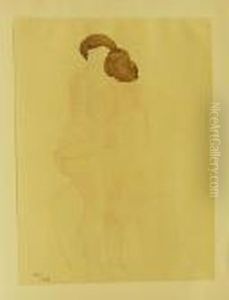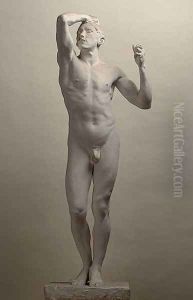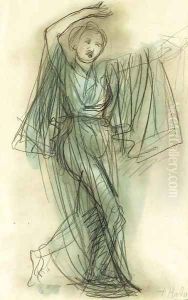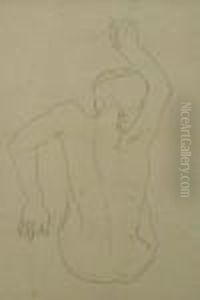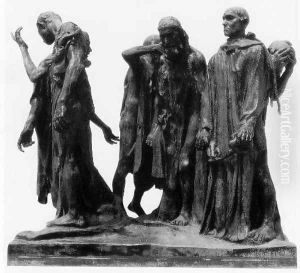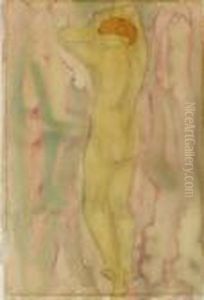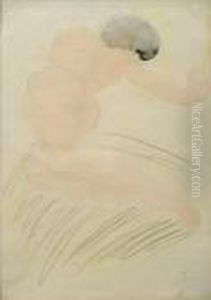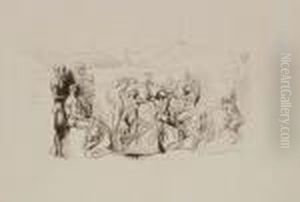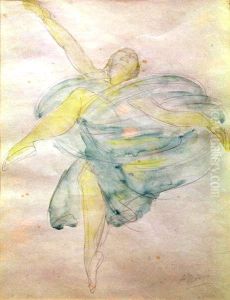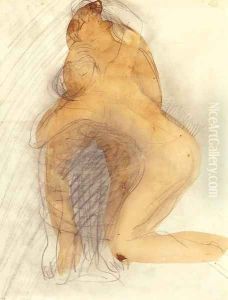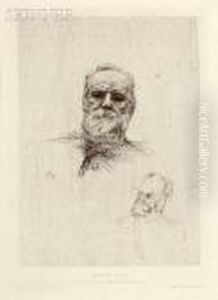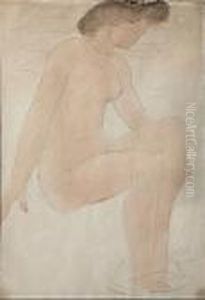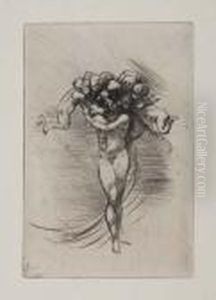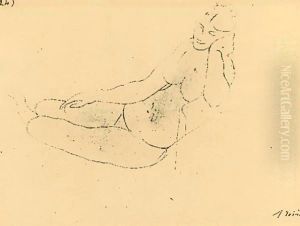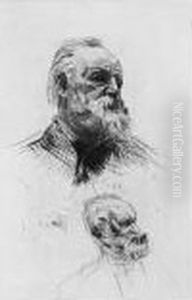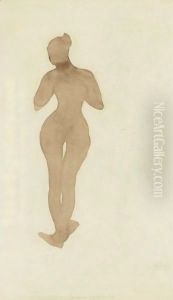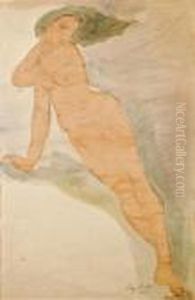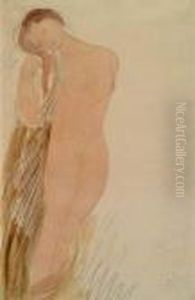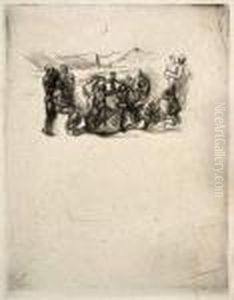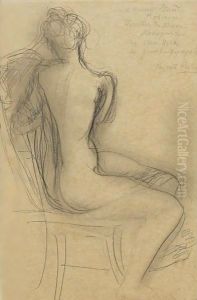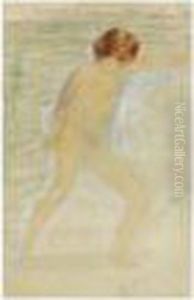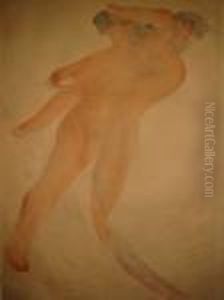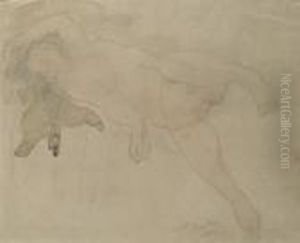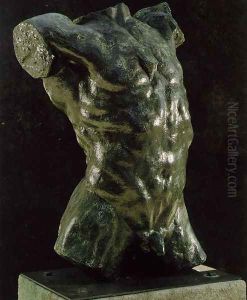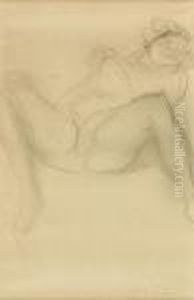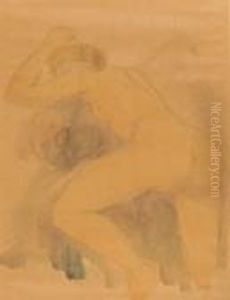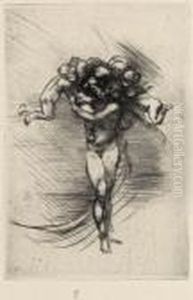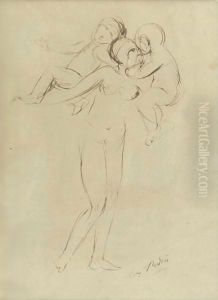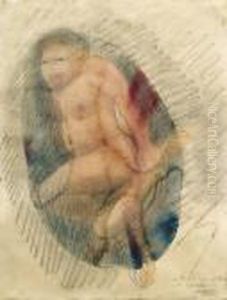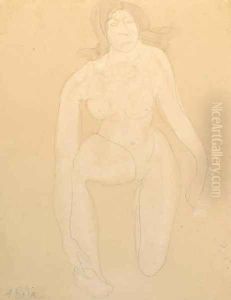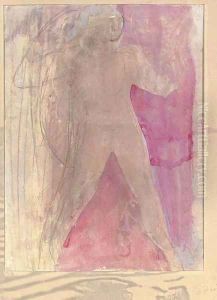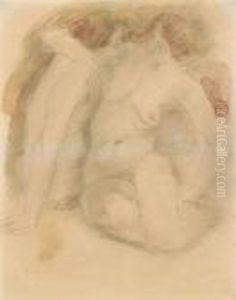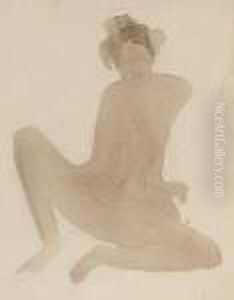Auguste Rodin Paintings
François-Auguste-René Rodin, known as Auguste Rodin, was a French sculptor widely regarded as the progenitor of modern sculpture. Born in Paris on November 12, 1840, Rodin's early education came from the Petite École, a school specializing in art and mathematics, rather than the prestigious École des Beaux-Arts. Despite his evident talent, Rodin failed to gain admission to the École des Beaux-Arts, a setback that initially steered his career away from sculpture.
Rodin began his artistic career as a craftsman and ornament designer, working for several years in the decorative arts. His early work involved collaborating with more established sculptors and creating decorative objects. It wasn't until 1875, after a trip to Italy where he was deeply influenced by the work of Michelangelo, that Rodin began to pursue sculpture seriously. This trip marked a turning point in his career, leading him to adopt a more personal and dynamic approach to sculpture.
One of Rodin's first major works, 'The Age of Bronze' (1877), caused a scandal because of its incredibly lifelike appearance; critics accused him of casting it from a living model, a claim that deeply offended Rodin. Despite this controversy, the piece eventually gained him recognition and commissions from the French government.
Rodin's most famous work, 'The Thinker' (1902), originally conceived as part of a larger work called 'The Gates of Hell', has become an iconic symbol of human thought and creativity. Similarly, 'The Kiss' (1882) and 'The Burghers of Calais' (1889) are celebrated for their emotional depth and realism. Rodin's ability to convey movement and emotion through bronze and marble was revolutionary, and his work paved the way for future generations of sculptors.
Rodin's personal life was marked by his long-term relationship with Rose Beuret, whom he met in 1864 and married in 1917, just a few weeks before their deaths. He also had a well-known affair with the artist Camille Claudel, who was both his student and muse. Claudel played a significant role in Rodin's artistic development, though their relationship ended acrimoniously.
Despite facing criticism during his lifetime, Rodin refused to conform to the academic norms of his day, instead pushing the boundaries of sculpture with his innovative techniques and expressive forms. His legacy was cemented by his donation of his works and collections to the French government, on the condition that they establish a museum dedicated to his art. The Musée Rodin in Paris, which opened in 1919, serves as a testament to his contributions to modern art.
Auguste Rodin passed away on November 17, 1917, in Meudon, France, leaving behind a body of work that forever changed the landscape of sculpture. His emphasis on depicting human emotion and movement with realism and intensity has inspired countless artists and cemented his place as a towering figure in the world of art.
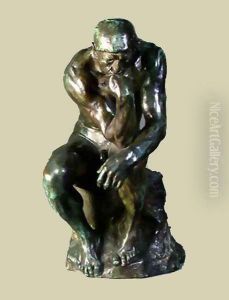
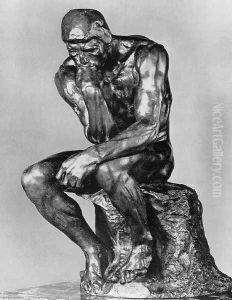
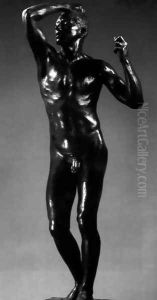
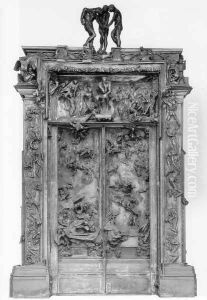
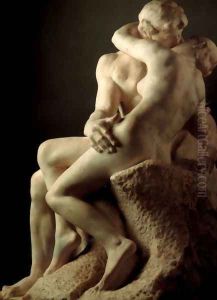
![L'Age d'Airain [detail: 1] (The Age of Bronze)](https://www.niceartgallery.com/imgs/261621/s/auguste-rodin-lage-dairain-detail-1-the-age-of-bronze-704dc6e0.jpg)
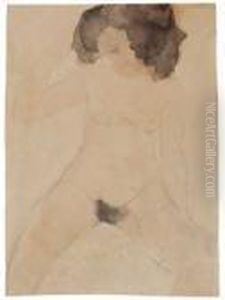
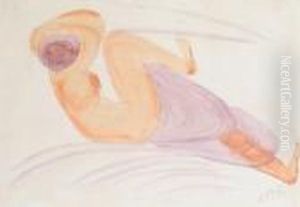
![The Kiss [detail]](https://www.niceartgallery.com/imgs/261619/s/auguste-rodin-the-kiss-detail-d64596af.jpg)
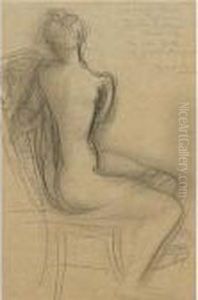
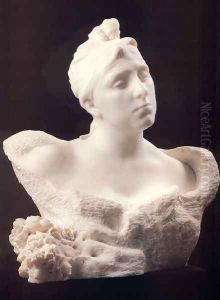
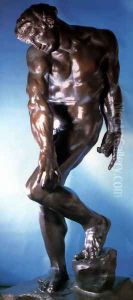
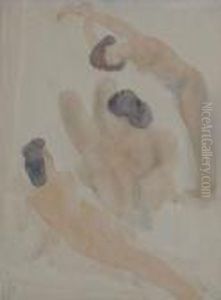
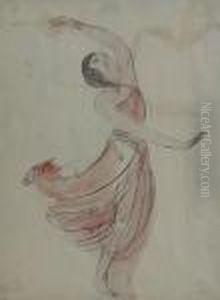
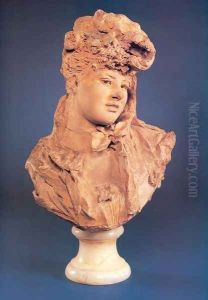
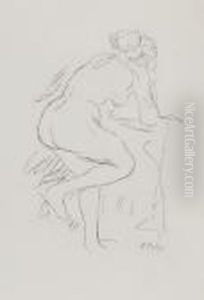
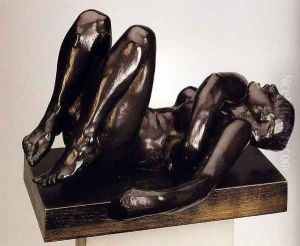
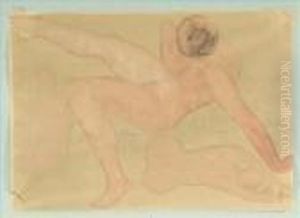
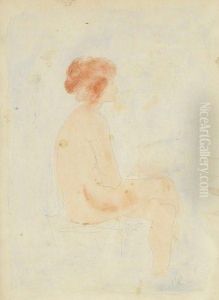
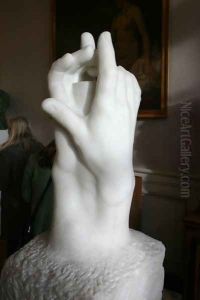

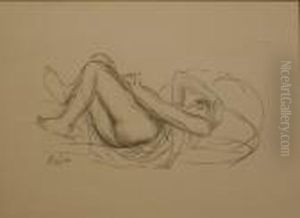
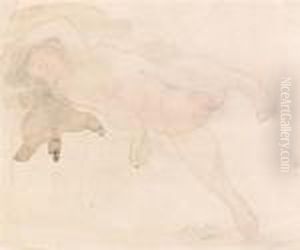
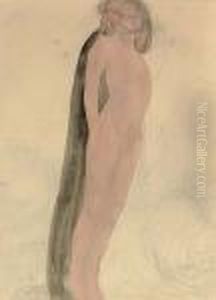
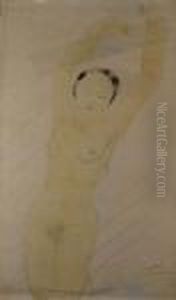
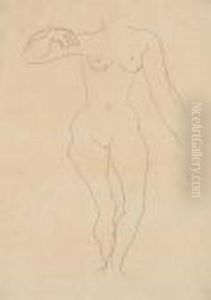
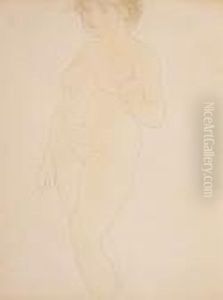
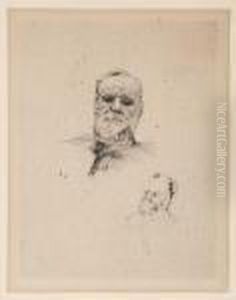
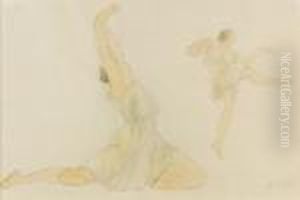
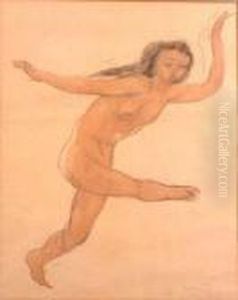
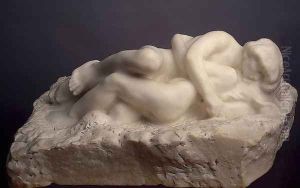
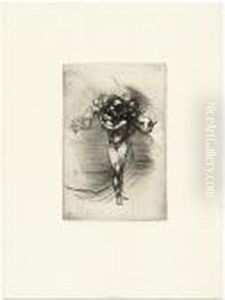
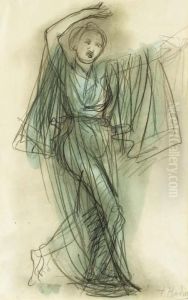
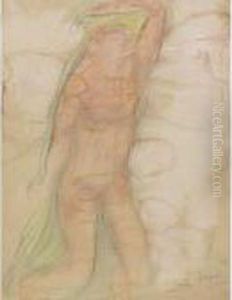
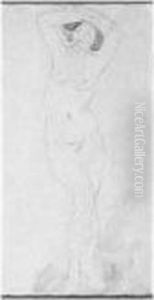

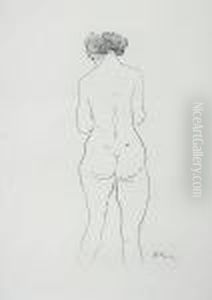
![The Kiss [detail: 1]](https://www.niceartgallery.com/imgs/261626/s/auguste-rodin-the-kiss-detail-1-3a734dab.jpg)
